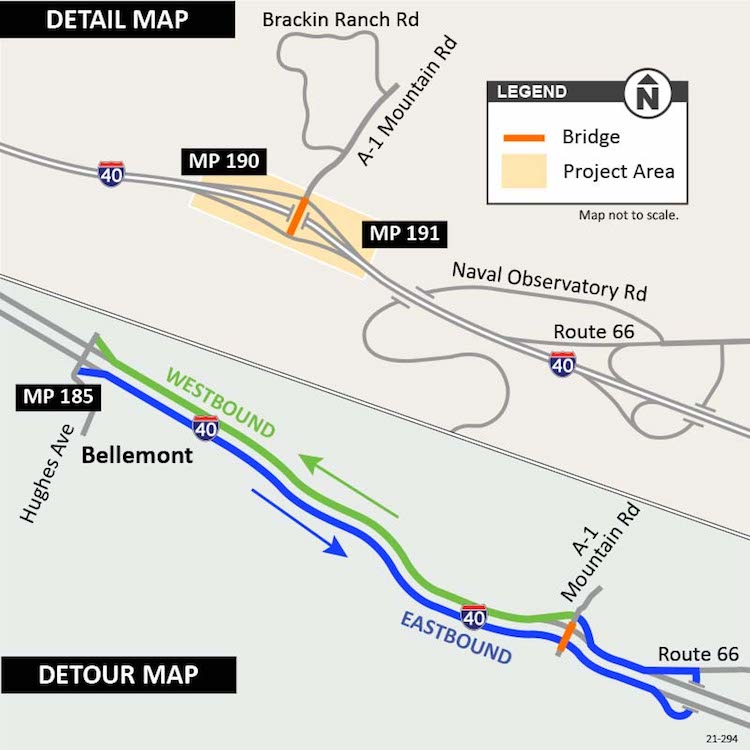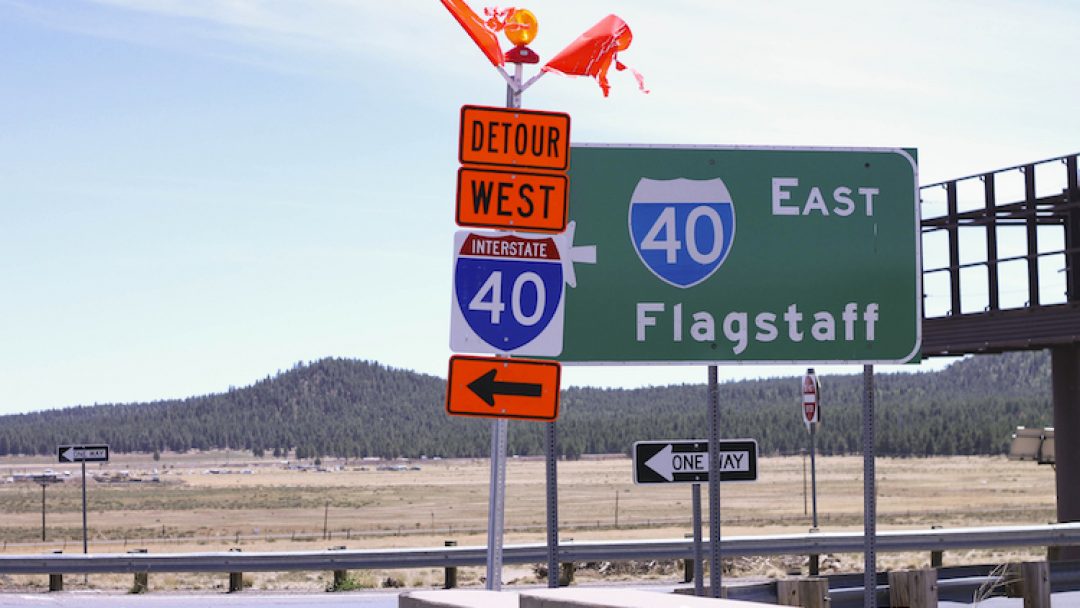Drivers will need to use a detour and plan for extra travel time on the I-40.
The Arizona Department of Transportation will demolish and replace the A-1 Mountain Road overpass along I-40 in Flagstaff in 40 days thanks to an innovative bridge construction method.
Crews will use an accelerated bridge construction method known as a geosynthetic reinforced soil-integrated bridge system. That means crews will create bridge abutments by putting in alternating layers of granular fill reinforced with synthetic material.
In order to replace the bridge, A-1 Mountain Road will be closed to all traffic over I-40 starting Monday, May 2.

During the 40-day closure, drivers will need to use the established detour route. Eastbound I-40 drivers wanting to exit A-1 Mountain Road will be detoured to Exit 191 to turn around and travel west to access A-1 Mountain Road. Drivers on A-1 Mountain Road who want to travel eastbound on I-40 will first travel westbound on I-40 and exit Hughes Avenue (Exit 185) to turn around and travel eastbound.
I-40 will also close overnight at the location of the bridge 16 times in each direction between 7 p.m. and 7 a.m. during the 40-day closure so crews can demolish the current bridge and construct the framework for the new bridge. Traffic will use the off- and on-ramps to detour around the closure.
Utilizing this method benefits drivers with a serious savings in construction time, allowing the project to be completed sooner than traditional methods. In addition, a new bridge deck will be constructed using a polyester polymer concrete that can be placed and cured in a matter of days rather than weeks.
The closure is expected to be lifted by Friday, June 10.
ADOT first employed this innovative technique a few years ago when the agency replaced the Meteor City Road bridge over I-40 east of Flagstaff.
The $4.9 million project, located about 5 miles west of the I-17 junction along I-40, is anticipated to be completed by this fall.
Click here for more information on the project.








